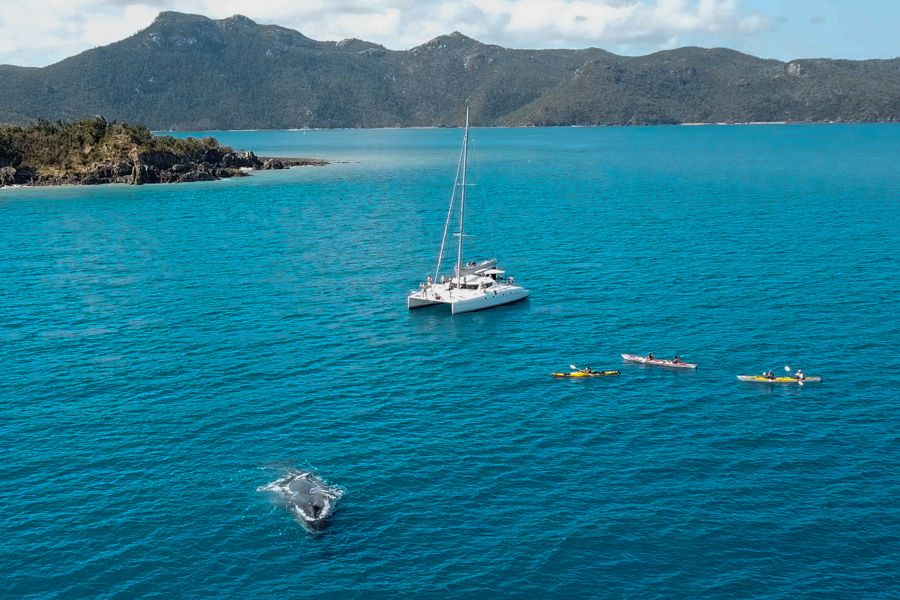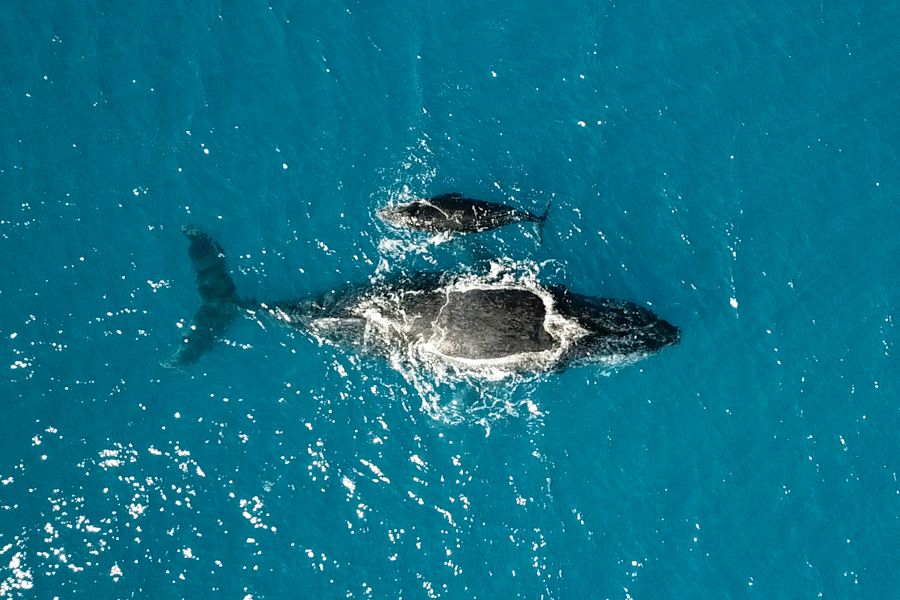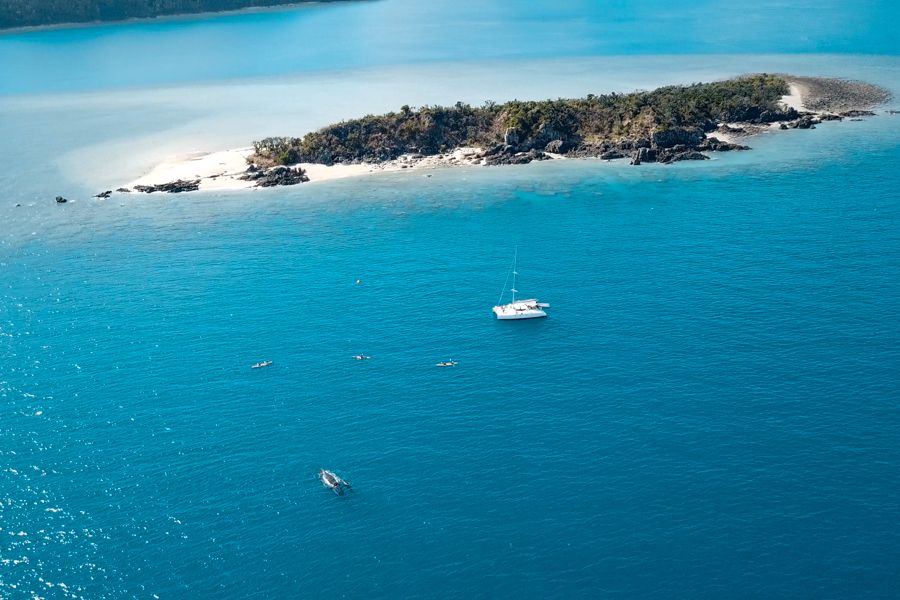History Of Whales In The Whitsundays
Whales come to the Whitsundays every year during their annual migration. From the frigid waters of Antarctica, thousands of whales travel north in winter in search of warm, calm water where they can safely and comfortably nurse their young.
The presence of whales in the Whitsundays is a cherished phenomenon. Locals and tourists alike head out into the Coral Sea on boat tours and often spot whales and their newborn babies frolicking in the tropical waters. In March 2024, the Whitsundays have officially become a Whale Heritage Site!

When is whale season in the Whitsundays?
Whale season in the Whitsundays runs from June to September every year. Each winter, the Whitsundays become host to thousands of whales as they migrate up the East Coast of Australia. The warm, tropical waters surrounding the islands become the perfect temporary home for visiting migratory species such as the humpback whale and the dwarf minke whale, which flock to the warm tropical waters.

Why do whales come to the Whitsundays?
Whales come to the Whitsundays to breed, give birth, and nurse their young in warm, tranquil waters. As humpback whales leave their feeding grounds in Antarctica in April, May, and June, they make their way north to reach their breeding grounds along the northeast coast of Australia, migrating as far as 10,000km during their journey.
Once they arrive at their destination, they will mate or have their young, using the warm waters to nurse and raise their newborns. The arrival of the whales has become a huge tourist attraction, allowing people to see these amazing creatures up close and in their natural environment. They have become a large part of the tourist industry and welcome visitors to Australian waters.

History of Whale Hunting in Whitsundays
While today Australians see the value and beauty of whales in their natural environment, that was not always the case. Many years ago humpback whales were hunted for their oil, bones and baleen, with whale hunting as the first primary industry in Australia after colonisation. As far back as people have lived in Australia, whales have been hunted.
There is even evidence that Aboriginals hunted smaller whales long before colonisation, where they were likely used for their meat and blubber. However, it was during large-scale fishing in the '40s, '50s and '60s, that whale populations on the Great Barrier Reef were depleted from 25,000 to around 500.
As whale numbers dropped dangerously low, a hunting ban was enacted in 1963. Without the pressure of whale hunting, whale numbers have thankfully increased over the decades!
Nowadays, Australia protects any and all whale species that enter its waters including:
- Blue Whale (endangered)
- Southern Right Whale (endangered)
- Sei Whale (vulnerable)
- Fin Whale (vulnerable),
- Humpback Whale (vulnerable)

Protecting Whales in the Whitsundays
Whales are now strongly protected under the Queensland Government. All visitors in the Whitsundays must abide by the rules and regulations that help keep whales safe and comfortable in their environment. You can read more about whale protection laws on the Queensland Government Environment website.
The Whitsunday Islands are also part of the Great Barrier Reef Marine Park, so all marine mammals are protected here under the Great Barrier Reef Marine Park Authority. Many species of whales can be found in the Great Barrier Reef Marine Park all year round such as spinner dolphins and snubfin dolphins. All species are also protected by the same laws that protect larger whale species.
However, even as whale populations become more plentiful in our waters, there is still so much we don't know about these animals that call the Whitsundays home. With strict rules and regulations in place to protect them and ensure they are left undisturbed by humans, we must keep them at arm's length to ensure their health, safety and comfort is maintained as they make their way to our waters each year.

2024: The Whitsundays become a Whale Heritage Site
With all the efforts made by local authorities and tourism operators to protect the whale population, the Whitsundays was officially named a Whale Heritage Site! Approved by the World Cetacean Alliance, the largest marine conservation partnership in the world, this accreditation is a huge win for the Whitsundays in terms of tourism and whale protection.
This also makes the Whitsundays the first Whale Heritage Site within a World Heritage Area, which is pretty amazing. The Whitsundays have been recognised for their outstanding efforts to protect and conserve whales and other marine life.
These private charters are perfect for spotting whales in the Whitsundays!












